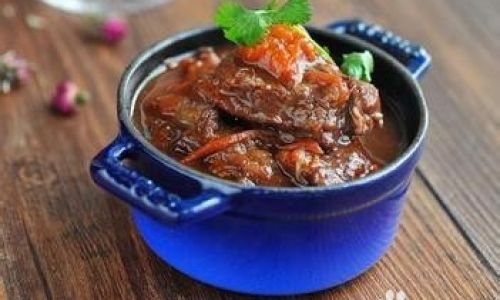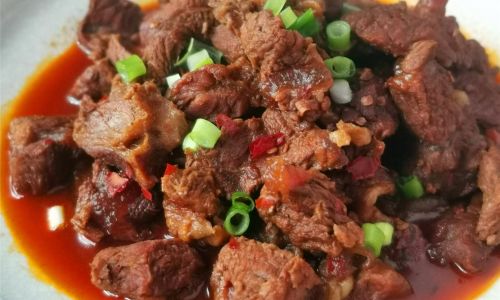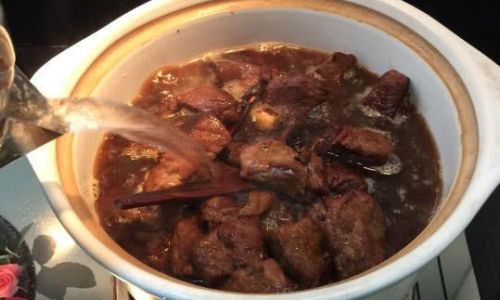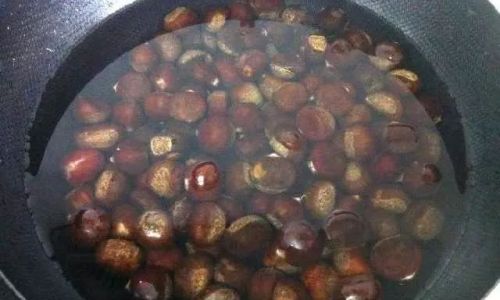Introduction
In the realm of comfort foods, few dishes evoke the warmth and nostalgia of a hearty beef stew. This timeless classic transcends cultural boundaries, offering a rich, flavorful experience that satisfies both the palate and the soul. While the essence of beef stew remains consistent—tender, slow-cooked beef in a savory gravy, accompanied by an array of vegetables—the methods and ingredients can vary widely. This guide aims to demystify the process of creating a perfect beef stew, focusing on the art of slow-cooking and the key steps to achieving that melt-in-your-mouth texture.
Choosing the Right Cut of Beef
The foundation of any great beef stew is the quality and type of beef used. For optimal results, opt for cuts that benefit from long, slow cooking. These cuts typically come from well-worked muscles, which contain more collagen and connective tissue. As they cook, these tissues break down, resulting in tender, flavorful meat.
-
Chuck Roast: This cut, taken from the shoulder area, is well-marbled and rich in flavor. It’s an excellent choice for stew due to its ability to become tender after prolonged cooking.

-
Brisket: Known for its robust flavor and tough texture when raw, brisket transforms into a tender, juicy delight when slow-cooked.
-
Short Ribs: These bones-in cuts are particularly prized for their rich, beefy taste and the gelatinous marrow that adds body to the stew.
When selecting your beef, look for cuts with even marbling and a good color—a deep, rich red indicates freshness. Avoid cuts that are overly lean, as some fat is necessary for flavor and moisture retention during cooking.
Preparing the Beef
Before cooking, there are a few essential steps to ensure your beef stew is both tender and flavorful:
-
Trimming: Remove any excess fat or silver skin from the beef. While some fat is beneficial, too much can make the stew greasy.
-
Seasoning: Season the beef generously with salt and pepper. For added depth, consider using a blend of coarse sea salt, freshly ground black pepper, and perhaps a pinch of garlic powder or paprika.
-
Searing: This step is crucial for developing a flavorful fond on the bottom of your pot, which will later form the basis of your stew’s rich gravy. Heat a heavy-bottomed pot or Dutch oven over medium-high heat with a tablespoon or two of oil. Sear the beef pieces in batches until they are browned on all sides, about 3-4 minutes per side. Be patient; overcrowding the pot will steam the meat rather than sear it.
Building the Flavor Base

Once the beef is seared, remove it from the pot and set it aside. Now, it’s time to build the foundation of your stew’s flavor:
-
Vegetables: Start with aromatic vegetables such as onions, carrots, celery, and garlic. These not only add depth of flavor but also contribute essential nutrients and texture. Sauté these vegetables in the same pot used for searing the beef, scraping up the browned bits from the bottom. This process, known as deglazing, releases all the flavorful juices and fond stuck to the pot.
-
Tomatoes: Tomatoes, whether fresh, canned, or pureed, add acidity and sweetness, balancing the rich flavors of the beef and vegetables. If using canned tomatoes, opt for whole peeled tomatoes and break them up by hand, retaining some chunks for texture.
-
Liquid: The liquid in your stew should be flavorful and just enough to cover the ingredients. Beef broth or stock is traditional, but you can also use red wine for added complexity. If using wine, choose one that you would drink—its flavor will directly influence the final dish. For a deeper flavor, consider making your own beef broth or reducing store-bought broth with aromatic vegetables and herbs.
Adding Depth with Aromatics and Spices
To elevate your stew from good to great, incorporate a variety of aromatics and spices:
-
Bay Leaves: These add a subtle, earthy flavor.
-
Thyme and Rosemary: Fresh or dried, these herbs contribute a classic, herbal aroma.
-
Worcestershire Sauce: A splash of this umami-rich sauce can deepen the beefy flavors.

-
Mustard or Soy Sauce: A small amount can add a surprising layer of complexity.
-
Bouquet Garni: A bundle of tied-together herbs like parsley stems, thyme sprigs, and bay leaves can be removed easily before serving, ensuring a clean presentation.
Incorporating Vegetables
The beauty of beef stew lies in its versatility; you can include a variety of vegetables to suit your taste and seasonal availability. Root vegetables like potatoes, turnips, and rutabagas hold their shape well and add creaminess. Softer vegetables like peas, corn, or bell peppers can be added towards the end of cooking to retain their texture.
The Slow-Cooking Process
Now that all your ingredients are prepared, it’s time to let the magic happen. Transfer the seared beef back into the pot with the vegetables and liquid. Bring the mixture to a gentle simmer, then reduce the heat to low. The key to a successful stew is patience; slow cooking allows the flavors to meld and the meat to become tender.
-
Covered Cooking: Cooking with the lid on helps retain moisture and ensures even cooking. For most stews, this slow cooking process can take anywhere from 2 to 4 hours, depending on the cut and desired tenderness.
-
Checking and Stirring: Occasionally check the stew, stirring gently to prevent sticking and to ensure even cooking. If the stew appears too thick, add a little more broth or wine. Conversely, if it’s too thin, remove the lid for the final 30 minutes to allow some evaporation.
Finishing Touches

As the stew nears completion, taste and adjust the seasoning. This is your opportunity to add a final touch of acidity with a squeeze of lemon juice or vinegar, or a sprinkle of fresh herbs like parsley or chives. If desired, thicken the stew slightly with a cornstarch slurry (mixed with equal parts cornstarch and cold water) for a more velvety texture.
Serving Your Beef Stew
Serve your beef stew over a bed of mashed potatoes, rice, or crusty bread to soak up every last drop of the flavorful gravy. Garnish with a sprinkle of fresh herbs, a dollop of sour cream, or a slice of crispy bacon for added indulgence.
Storage and Reheating
Beef stew is a fantastic make-ahead dish. Once cooled, store it in airtight containers in the refrigerator for up to 4 days or in the freezer for up to 3 months. To reheat, gently warm the stew over low heat, stirring occasionally, until heated through. Avoid overcooking, as this can make the meat dry and the vegetables mushy.
Conclusion
Mastering the art of slow-cooked beef stew is a rewarding culinary endeavor that yields a dish rich in flavor, texture, and comfort. By following these guidelines—choosing the right cut of beef, preparing it properly, building a flavorful base, incorporating a variety of vegetables, and allowing time for slow cooking—you can create a beef stew that will be cherished by family and friends. Whether enjoyed on a cold winter night or as a hearty meal any time of year, beef stew stands as a testament to the simple, timeless joy of good food.






0 comments